UNESCO World Heritage is an international agreement that was approved by the General Conference of UNESCO on November 16, 1972. In general, the subject of this agreement is to preserve the historical, natural and cultural works of mankind, which are of global importance and belong to all people on earth, regardless of race, religion and nationality. Based on this convention, UNESCO member countries can nominate their country’s historical, natural and cultural monuments to be registered as world heritage. Registered works of Iran in UNESCO
The protection of these works after registration, while remaining within the jurisdiction of the respective country, will be the responsibility of all member countries.
UNESCO world heritage can be a place such as a forest, mountain, reservoir, desert, tomb, building, complex or city; For example, unique natural and cultural places such as the pyramids of Egypt, the Great Barrier Reef in Australia, the Galapagos Islands in Ecuador, the Taj Mahal in India, the Grand Canyon in the United States of America, the Acropolis in Greece or Naqsh Jahan Square in Isfahan, which is still on the heritage list. have been registered as UNESCO World Heritage Sites.
In order to register the works in the UNESCO World Heritage List, it is necessary to meet at least one of the ten global registration criteria. These criteria, which are categorized into two categories of cultural and natural criteria, are:
Cultural criteria of the UNESCO World Register
i: To display a masterpiece of human ingenuity and creativity.
ii: Show the exchange of human values in a period of time and in a cultural region that has resulted in progress in architecture or technology, urban planning or landscape design.
iii: It is a unique or exceptional document that proves the existence of a living or lost cultural tradition or civilization.
iv: Be an outstanding example of architecture or technology that represents an important phase of human history.
V: Show the interaction between humans and the environment or be considered representative of a culture.
vi: be directly or concretely related to events or traditions of life, thoughts and ideas or important works of art and literature in the world.
Natural criteria of the UNESCO World Register
vii: be a unique natural phenomenon with exceptional and aesthetic features.
viii: It is considered an outstanding example in the field of showing the stages and changes of geological history.
ix: It is a residual effect of environmental and biological processes that have had an impact on the evolution and development of land, coastal and marine ecosystems, and communities of plants and animals.
X: Be one of the valuable natural habitats that have biological diversity and the habitat of endangered species.
With 26 works in the UNESCO World Heritage List, Iran ranks 10th in terms of registered world works among the countries of the world. In the following, we will introduce Iran’s world-registered works in two sections: historical works and natural works:
Historical and cultural monuments of Iran in UNESCO
A major part of Iran’s universally registered works, historical and cultural works of the country along with the name of the province and the year of their registration are:
Chaghazanbil – Khuzestan – 1979
Chaghazanbil Ziggurat is a famous ancient structure and one of the registered works of Iran in the UNESCO World Heritage List. Chaghazanbil, which is called “Dur Untash” in the ancient Elamite language, is a collection from the era of Ilam or ancient Elam, which is located in the province of Khuzestan, between Shushtar and Shush (from east to west) and between Dezful and Ahvaz (from north to south). has taken. Chaghazanbil is located 42 kilometers east of Shush and is part of Shush city. On the east side of Chaghazanbil, Rooz Dez is located and there is a distance between it and the city of Shushtar. However, you have to travel approximately 25 kilometers to reach Chaghazanbil from Shushtar.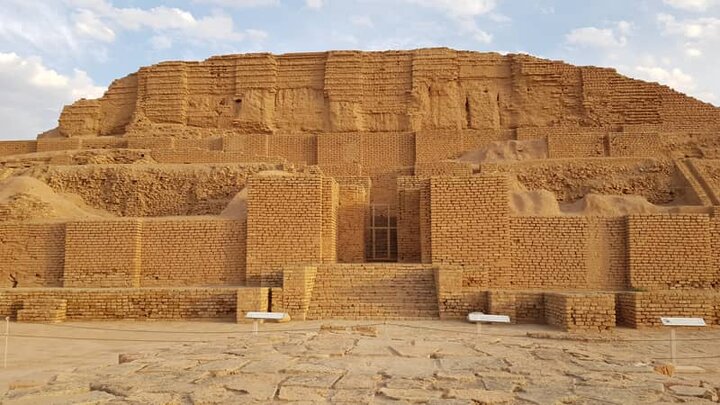
Why is it recommended to visit Cheghazanbil Ziggurat?
– It is the first registered work from Iran in the UNESCO world list.
– It is the largest ziggurat in Iran.
– Cheghazanbil ziggurat can be considered the Asian equivalent of the Egyptian pyramids.
– It has one of the first water purification structures in the world.
Takht Jamshid – Fars – 1979 Registered works of Iran in UNESCO
The construction date of Persepolis dates back to 518 BC, that is, about 2500 years ago. Darius I, the third Achaemenid king, ordered the construction of a huge palace in the mountains around Marvdasht. But the construction of mansions and statues of this building was prolonged and continued during the time of the next kings. Each of the palaces in Persepolis was built during the reign of one of the kings of the Achaemenid period. The name of this building was registered in the UNESCO heritage list in 1979 as the second surviving work of Iranian history and culture.
Persepolis means the place where Persians live. This building is also known by other names such as Hundred Pillars or Forty Minars. The Takht Jamshid building was actually built by Dariush Achaemenashi about 25 centuries ago on a hill called Rahmat, and it was a symbol of glory and greatness in ancient Iran and is considered one of the sights of Shiraz. It can be said that Persepolis and the remaining buildings in it are considered one of the most important documents of the history of world civilization and are the architectural manifestation of the palace of the kings. At the height of their power, the Achaemenid kings built their stone palaces in the heart of the mountains to show a clear picture of the future of their government.
Persepolis is a relic left by the kings of the Achaemenid period in Iran since 2500 BC. Considering the extent of the Achaemenid Empire in ancient Iran, which also covered a significant part of the eastern part of the world, the splendor of the seat of these kings can be seen in this historical building. It should be noted that among the six capitals of the Achaemenid Empire, Persepolis was the largest and most prominent capital. By studying the inscriptions and works left in this area, archaeologists have realized the progress of civilization in ancient Iran. The social laws of this period also surprised many historians.
Persepolis is also known in the world as Persepolis, which is known as its Greek name. The region of Persepolis is also known as the land of Pars. Countless architects and artists participated in the construction of this building and it was built by male and female workers. But what adds to its value throughout history is the behavior of the Achaemenid kings with the workers who in ancient Iran received appropriate wages and benefits for their labor. According to the information in the inscriptions, the construction of Persepolis took about 120 years.
Naqsh Jahan Square – Isfahan – 1979
The construction of this square and its surrounding structures was completed in 1025 lunar year. Then the decoration of the buildings of the square began and lasted until the reign of Shah Abbas II. The initial glory of Naqsh Jahan, right during the reign of the last Safavid king and with the drying of the streams around the square and finally, Ashraf Afghan’s attack on Isfahan was lost. This square was also destroyed during the Qajar era, and mansions such as the Naqarkhaneh mansion were also destroyed in this area.
The place we call Naqsh Jahan Square used to be a big garden whose central part was called Kushk. In this part, there were buildings that were left over from the period of Agh Quyunlu and Qaraquyunlu, and big celebrations and important holidays were held there. When the Safavids came to power and chose Isfahan as their capital, this city entered a new era of prosperity and civilization. In line with the expansion and prosperity of Isfahan, Shah Abbas Safavi ordered to build Naqsh Jahan square in Isfahan in 1011.
The construction of this square and its surrounding structures was completed in 1025 lunar year. Then the decoration of the buildings of the square began and lasted until the reign of Shah Abbas II. The initial glory of Naqsh Jahan, right during the reign of the last Safavid king and with the drying of the streams around the square and finally, Ashraf Afghan’s attack on Isfahan was lost. This square was also destroyed during the Qajar era, and mansions such as the Naqarkhaneh mansion were also destroyed in this area.
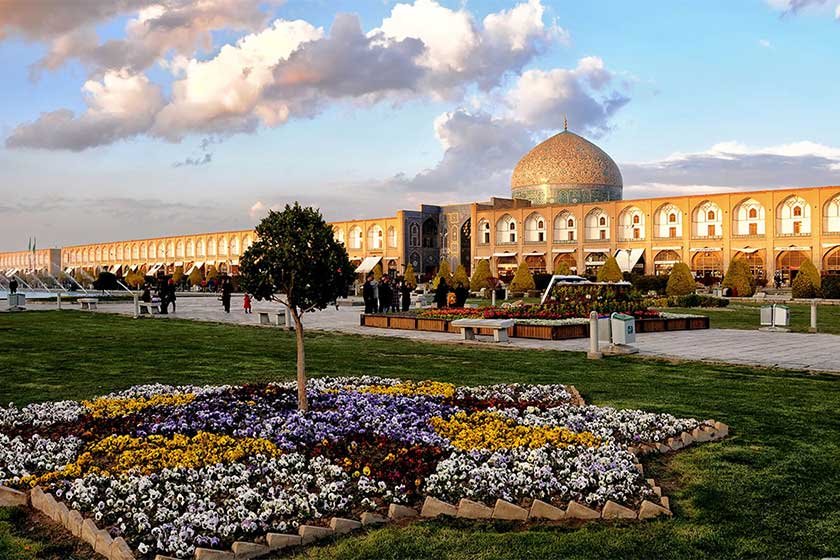
Takht Suleiman – West Azerbaijan – 2003 Registered works of Iran in UNESCO
The ancient city of Takht Suleiman was the residence of the Medes, Achaemenids, Parthians, Sassanids and Mongols, which was at the peak of prosperity and power in all these periods. Takht Suleiman is three thousand years old, and its eternal fire for seven centuries was considered a sign of the greatness and authority of Sassanid rule and Zoroastrian religion. In fact, this area was the largest center of religious education and cultivation of Zoroastrian priests in the Sassanid era. This collection was included in the list of Iran’s national monuments on 29 December 1316, and in July 1382, it was included in the world register to become the fourth work of Iran in the UNESCO World Heritage List after Persepolis, Chaghazanbil, and Naqsh Jahan Square.
Along with the ancient and natural wonders, Takht Suleiman is one of the places on the planet where the energy flow of the earth can be well understood. Tourists have been coming to this place since 2004 on the day of the peak of the Earth’s energy activities and going around its lake in a clockwise direction to experience an amazing spiritual and psychological feeling.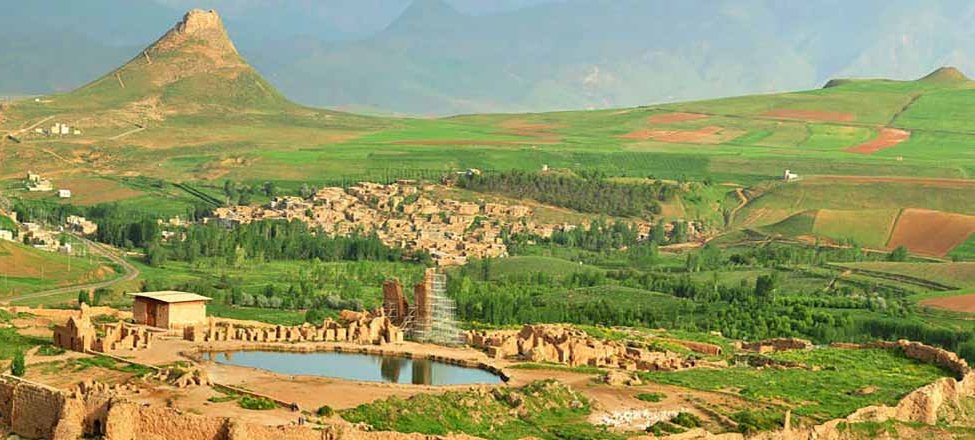
Bam Citadel – Kerman – 2004
Arg Bam is an ancient city with a series of tall buildings and it includes two parts, the serfs and the government, each of which has its own structures and functions. In fact, the upper part of the citadel has been used as a political and military command center and a seat of government. This citadel has an area of about 18 thousand square meters and walls with a height of 6 to 7 meters surround it. These nested walls, which continue to the center of the citadel, separate the different parts of the citadel.
The historical Bam citadel is more than 2,500 years old and has played an important role in the history and culture of Iran and has repeatedly prevented invaders from entering Iran. The proof of this issue can be seen in the stunning stories from the time of the invasion of Agha Mohammad Khan Qajar and the killing of Lotf Ali Khan. Although the Bam citadel could not withstand the terrible earthquake of 2002 and was severely destroyed; For this reason, since then, the restoration work on the historical monument of the citadel has continued.
The unique features of the Bam citadel made it to be registered in the list of national monuments of Iran in 1345, and finally in 2004 it was included in the UNESCO World Heritage List.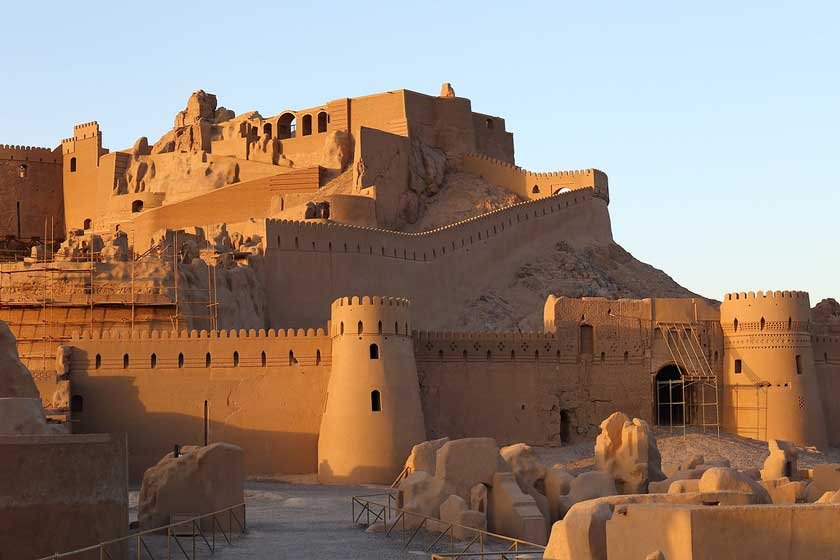
Arg Bam after the earthquake
In the morning of January 5, 2002, an earthquake with a magnitude of 6.6 on the Richter scale shook Bam and, in addition to causing great loss of life and money to the city, it caused the destruction of about 80% of the Bam citadel. The extensive damage to the citadel was such that UNESCO included it in the list of “heritage in danger”; However, the renovations and restorations after the Bam earthquake until 2013 caused the UNESCO World Heritage Committee to accept the reforms in the maintenance and management of the citadel and its surrounding area and remove it from the endangered heritage list.
Pasargad – Fars – 2004
The Pasargad collection in Shiraz is one of the works left over from the Achaemenid period. Pasargad is located in Pasargad city of Fars province and in Marghab plain. This vast complex includes the tomb of Cyrus, royal palaces, royal garden and waterways, stone tower, Tel Takht, holy area, Mozaffari Caravanserai and Atabaki Mosque. The ancient complex of Pasargad was the first Achaemenid capital, whose main area was 160 hectares and was surrounded by a large plain. Undoubtedly, the tomb of Cyrus is the most famous building of this ancient complex in Shiraz. This great ancient city was registered as the fifth Iranian work in UNESCO World Heritage in 2003.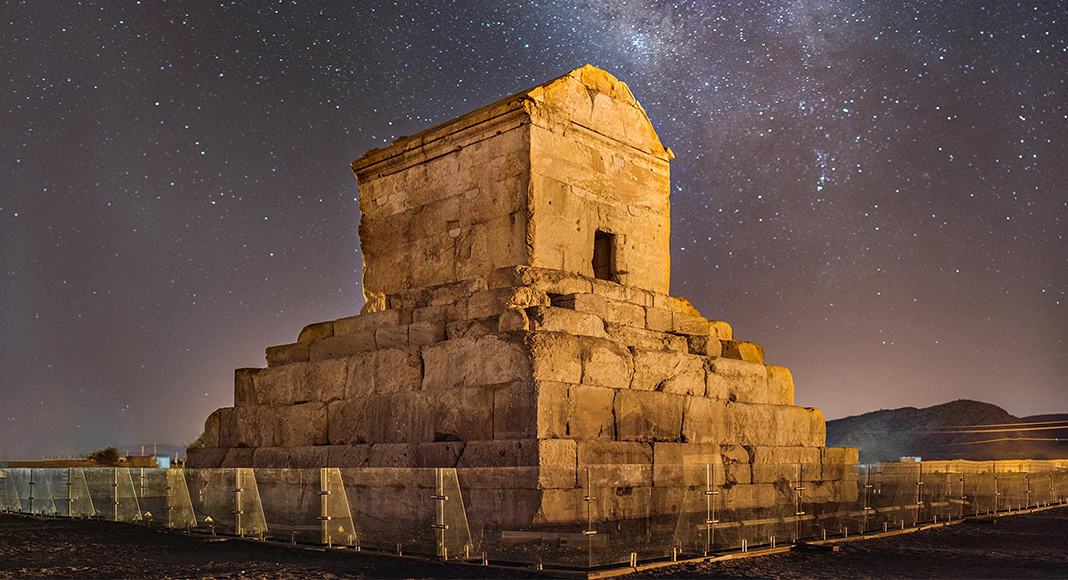
Soltanieh Dome – Zanjan – 2005
This octagonal dome is one of the masterpieces of Iranian and Islamic architecture. The dome of this building is 54 meters high and 25 meters in diameter and shines like a turquoise gem in a green field from a distance. This historical monument is built on eight sides and there is a minaret on each side. The Soltanieh dome has three floors and its architectural style is similar to the architecture of the Seljuk period.
Some people say that these minarets are so that they can say the call to prayer from all sides of the dome, but others believe that these minarets were built to prevent damage to the building and the dome during an earthquake.
Why is it recommended to visit Soltanieh Dome?
It has the title of the largest brick building in the world and the third highest dome in the world, after Santa Maria and Hagia Sophia.
Its unique architectural style has inspired other famous buildings in the world.
It is considered one of the most spectacular and beautiful attractions of Zanjan city.
It is considered one of the strongest historical monuments of our country.
It has a lot of cultural and historical value and has been registered in the list of UNESCO works.
Biston stone inscription – Kermanshah – 2006 Registered works of Iran in UNESCO
The Bistun inscription, which is the seventh registered Iranian work in the UNESCO world list, is one of the famous places of Kermanshah and is located 30 kilometers east of Kermanshah city.
Today, the road that started from Hamadan and passes through the cities of Kangavar, Kermashan (Kermanshah), Sarpolzahab, Qasrshirin and Khosravi reaches the land of Mian Rhodan (Meter-Nahrine); The same ancient road is several thousand years old that has connected the eastern and middle lands of Iran to the western lands and to Babylon, Nineveh and other cities in the middle of the river.
Along this road and especially in Biston, many ancient monuments can be seen, which were a sign of the special approach of our predecessors.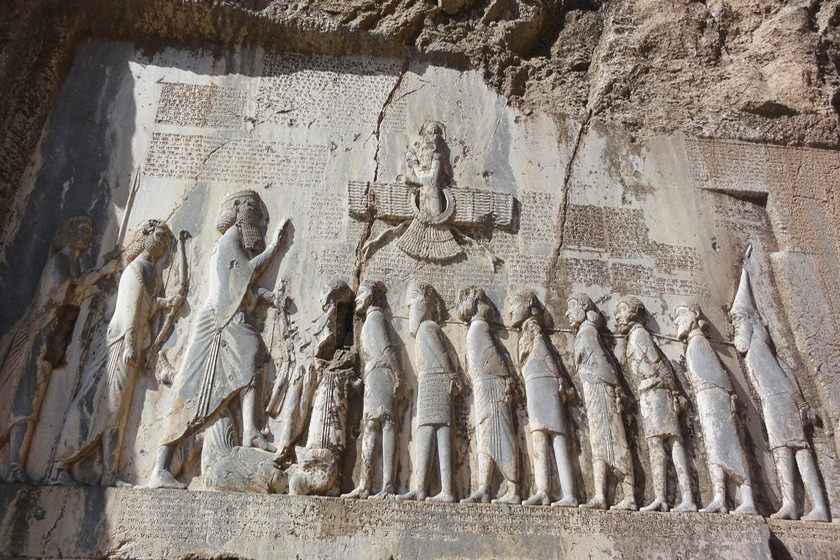
Collection of Armenian churches – East Azerbaijan and West Azerbaijan – 2008
Iran’s churches, which are registered in the UNESCO World Heritage List, face a 30% increase in tourists and visitors every year. Meanwhile, Europeans know the most about this group of churches. The number of Asian tourists is also high.
In 2005, the experts of Iran’s Cultural Heritage Organization started the restoration project of this building. Between the two arches, they found bones that probably belong to the apostles and Christian saints. According to the Armenian archbishop of Tehran, these bones may belong to the body of Saint John (Yahya bin Zakaria).
We will mention some features of St. Stephen’s Church. The entrance of the prayer hall is decorated with wood inlay, which is one of the exquisite works of the Qajar period, i.e., the 19th century. The architect of this building decorated the front of the arch with reliefs of apostles, angels and saints. Undoubtedly, these carvings, arches, half-columns and muqrans are architectural masterpieces. A pyramid cover is placed on this 16-sided structure.
The interior is in the style of a basilica, which includes three parts: the porch, the prayer hall, and the altar. The “bell tower” is located inside an octagonal dome, on a two-story porch connected to the south wall of the church. Inside the tower and in the lower part of this dome, there are beautiful and stunning decorations, the inner walls are decorated with carvings such as eye-catching images of the Holy Mary and the young Jesus.
A corridor called “Daniel’s oven” is also connected to the north wall of the church. Daniel is one of the saints of the fifth century AD. This part has a high platform on which a stone table is placed for baptism.
Next to this building, there is a 900-year-old dairy that has been used to accommodate pilgrims and passing travelers.
Shushtar water structures – Khuzestan – 2009 Registered works of Iran in UNESCO
In the north of Khuzestan, there is a city called Shushtar, which is only 63 kilometers away from Dezful. This city is famous for its waterfall and water structures and welcomes many tourists every year. Historians believe that the construction of this city is due to the destruction of the city of Shush, therefore a city called Shushtar, meaning a better city, was built a few kilometers away from the city of Shush. It is interesting to know that the city of Shush was the capital of Khuzestan province until the beginning of the Pahlavi period. Due to the special location of the city of Shushtar and the crossing of the Karun and Dez rivers, a complex and huge irrigation system was created in this city, which dates back to the Achaemenid and Sasanian eras. This structure consists of bridges, dams, waterfalls, canals and large tunnels that are very coordinated and regularly connected with each other and has the role of directing water. This beautiful and unique complex was created with the aim of making the most of water . But today only a part of it remains.
The Shushtar Blue Complex is one of the largest industrial complexes before the industrial revolution, which is unique not only in Iran but also in the world, and has registered its name in the UNESCO World Heritage List.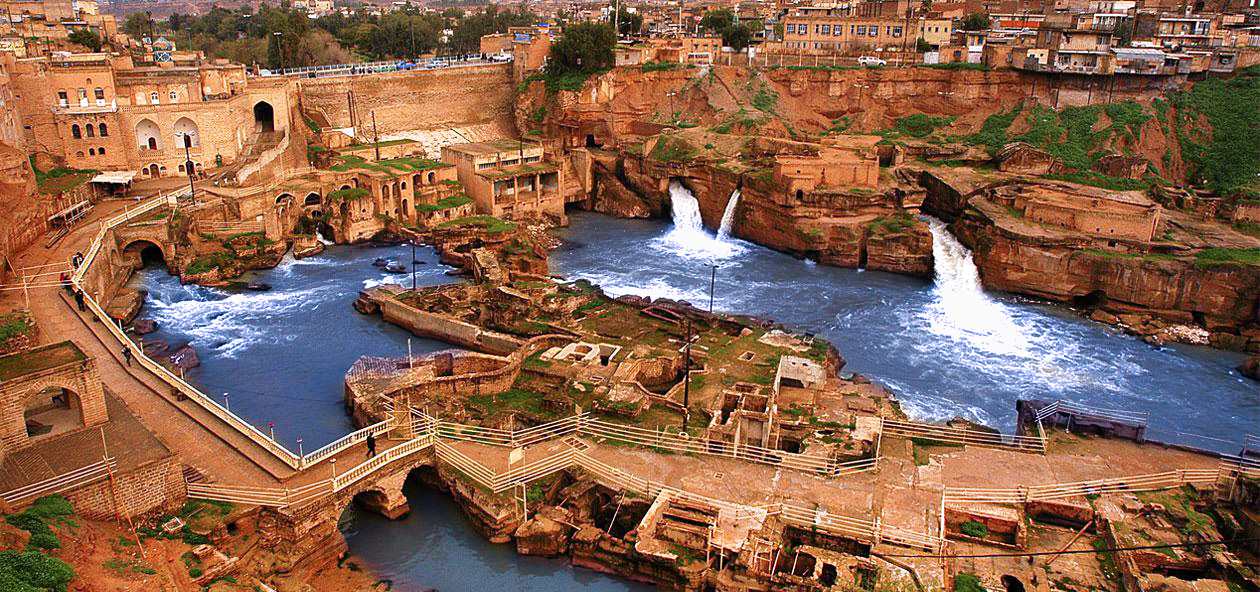
Tabriz Bazaar Collection – East Azerbaijan – 2010
Azar Tabriz is one of the most important tourist attractions of Tabriz and one of the largest covered markets in the world. This historical market, where business is still thriving and is considered one of Tabriz’s attractions, shows the importance of Tabriz in commercial and cultural exchanges in Iran from the past to the present, and is also registered in the UNESCO Cultural Heritage Organization. It has arrived where you can buy all kinds of Tabriz souvenirs. Join us to take a tour of this world’s largest covered structure on the Silk Road.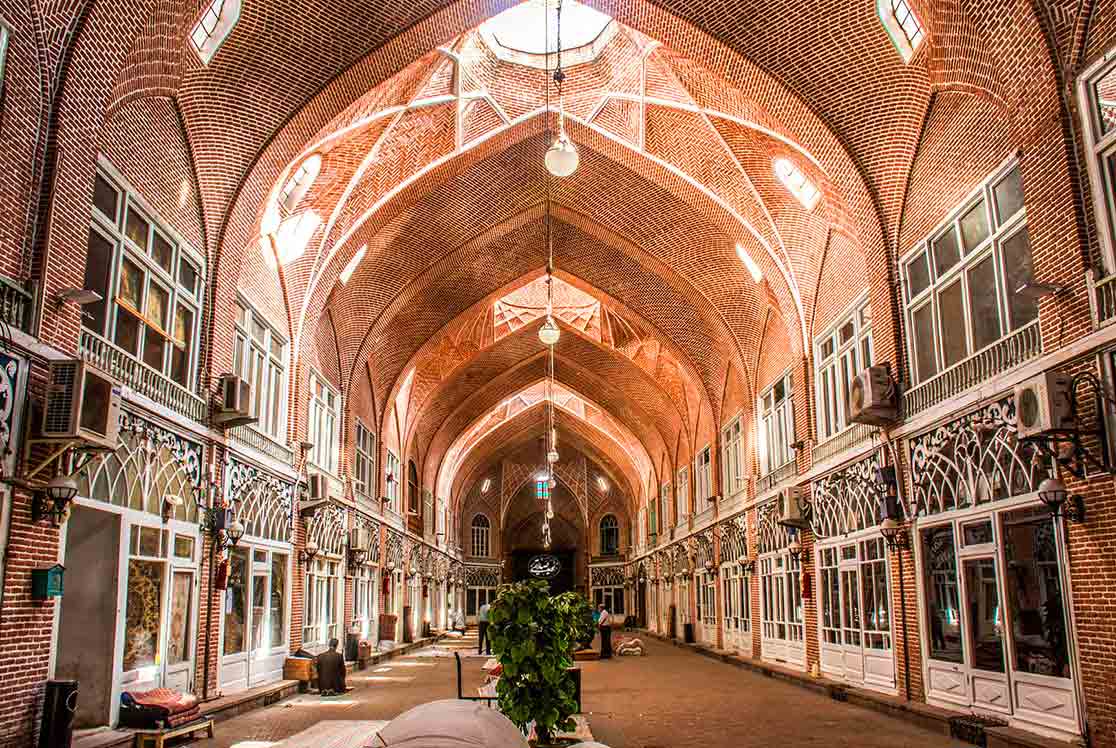
Tomb of Sheikh Safiuddin Ardabili – Ardabil – 2010
The tomb complex of Sheikh Safiuddin Ardabili is very large and has many parts to visit, which include: the main courtyard, the Shah Abbas gate, the main gate or the large gate, the new challah house, the large yard or the garden yard, the building known as Dar al-Hadith. Gonbad Allah Allah (Sheikh Safi Tomb), Dar Al Hafaz Hall, Shah Neshin, China House, Tomb of Shah Ismail I, Haram Khana, building known as Janat Sera.
In 2010, the tomb of Sheikh Safiuddin Ardabili was registered in the UNESCO World Heritage List. This valuable historical complex is located in Ali Qapo Square and Sheikh Safi Street in Ardabil.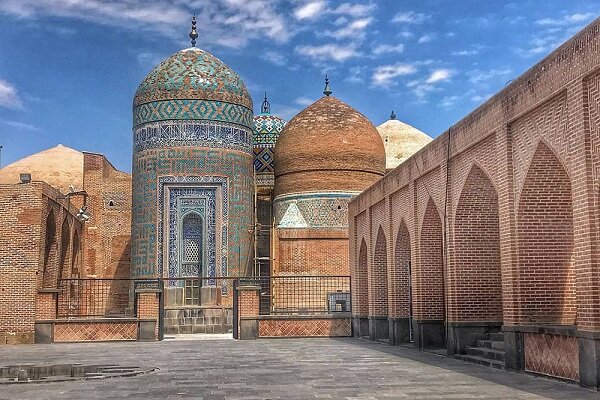
Collection of Iranian gardens – shared by several provinces – 2011
One of the special features of Pasargad complex is the royal garden and its palace complex. In Pasargad, an Iranian garden has been built with all its features and main architectural elements. Bagh Shahi in the area of Pasargad included a collection of palaces and booths along with stone and mud fountains, of which few remains remain. As an example of the combination of architectural elements with nature and the role and distribution of water inside the garden and around the palaces, this collection has been a model for the following periods.
The entire garden has an area of 8 hectares, and according to historians, Cyrus’ tomb was in the middle of a large garden and Khoram plain, which was irrigated by numerous water passages originating from the Pelvar River. The gardens are one of the oldest remnants of Iranian gardening and today only a part of its canals and water features remain.
This garden is registered as the mother of Iranian gardens along with eight other gardens in the UNESCO world heritage list under the name of Iranian gardens.
Isfahan Jame Mosque – Isfahan – 2012
Jame Mosque of Isfahan, which is also called Friday Mosque or Old Mosque of Isfahan, is one of the historical and religious monuments of Iran in different historical periods, which was built by different governments such as Abbasid, Al Boyeh, Seljuq and Safavid, or under repair and reconstruction. is placed
Due to the age of this building, it is referred to as one of the oldest historical buildings in Isfahan, and they often refer to Jame Mosque of Isfahan to understand the architectural and religious style of the Seljuk period.
Isfahan Jame Mosque was listed as one of Iran’s national monuments on January 10, 1310, and was included in UNESCO’s World Heritage List in 2012, and for this reason, tourists from different countries of the world visit every year. To visit this historical monument, they travel to the country of Iran and the city of Isfahan.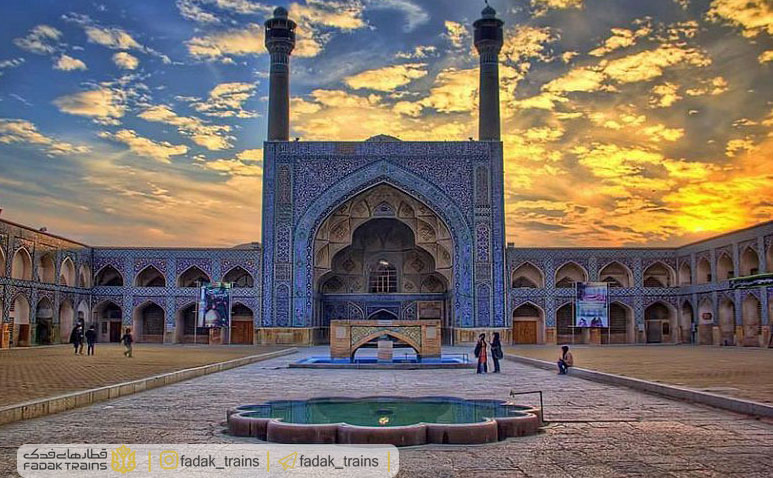
Qaboos Dome Tower – Golestan – 2012
Qaboos Dome is a historical structure located in Golestan province, which is known as Qaboos Dome Tower or Qaboos Dome Tower, and it has also earned the title of Freedom Tower. Qaboos Dome Tower is the tallest brick tower in the world, which was built in the 4th century of Hijri, and the entire tower is made of brick, which has an amazing architecture with its great height. The intelligence and ingenuity of the builders of this tower is definitely admirable.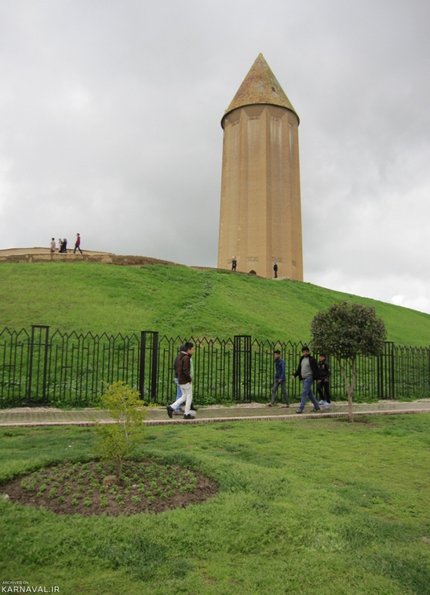
Why should we visit Qaboos Dome?
Qaboos Dome is one of the architectural masterpieces of Iran, which is known as the best work of engineering history in the world.
Qaboos Dome is registered as the 15th historical monument of Iran in the UNESCO World Heritage List.
Qaboos Dome Tower is the tallest brick tower in the world.
Golestan Palace – Tehran – 2013
Golestan Palace is a building located in the central part of Tehran city, which was built in the late 980s of AH during the Safavid era and was used by 7 Qajar kings as a place of residence and kingdom. Golestan Palace is a collection of several mansions, courtyards, gardens, halls and passageways, each of which can be a historical monument and a unique tourist attraction.
The presence of various kings in this palace has made the soul of the building witness important historical events, some of which we know about. But some others, like a secret in the heart of the building’s walls, will remain silent forever. Among the most important events that took place in Golestan Palace, we can mention the coronation of Muzaffaruddin Shah and Ahmad Shah Qajar, the opening of the 1st Majlis, the preparations for the extinction of the Qajar dynasty and the establishment of the Pahlavi dynasty, the sitting and coronation of Reza Shah and the coronation of Mohammad Reza Shah Pahlavi. The fact that Golestan Palace was built during the Safavid era, but what comes out of the heart of history now is all the events of the Qajar and Pahlavi eras, it is related to the fact that Golestan Palace underwent many changes and sometimes many damages throughout history. Therefore, currently there is not much information about the events that happened in this building before the Qajar era.
Golestan Palace is one of the most valuable historical places in Tehran , which undoubtedly deserves to be introduced to the world. In 2007, Golestan Palace was sent to the UNESCO World Heritage List. Initially, there were concerns about the rejection of this request due to the presence of tall buildings in the vicinity of the palace. But finally, after 6 years of investigations and many follow-ups, Golestan Palace was registered in the UNESCO World Heritage List as the first historical work of the World Register in the city of Tehran at the 37th annual meeting of the UNESCO World Heritage Committee in Cambodia on June 23, 2013.
Burnt city – Sistan and Baluchistan – 2014
Sistan and Baluchistan province and Hamon city have a dry and desert climate. In most months of the year, the temperature in this province is high. Therefore, the best time of the year to travel to this province and visit the burnt city is the autumn season.
There are two routes to go to Shahr Sokhte from Tehran. The eastern route from Tehran to Sabzevar and then moving towards South Khorasan province is one of these two routes. Moving from Tehran to the cities of Qom, Kashan, Yazd, Kerman and Nehbandan is the southern route of this trip.
There are beautiful ecotourism residences in Sistan and Baluchistan province. In addition to these accommodations, the Aram Shahr Zabul Hotel will be an ideal option for accommodation due to its short distance to the burnt city and suitable facilities.
The historical buildings and windmills of the Hozdar ancient area, Rostam Zabul Castle and Khwajeh Mountain are among the most important sightseeing areas of Sistan and Baluchistan province, which can be visited by traveling to the burnt city.
The burnt city is one of the most important historical and national monuments of Iran, which has been registered in the UNESCO World Heritage List.
Maimand village – Kerman – 2015
Maimand village is located 38 kilometers northeast of Babak city, Kerman province. This village is one of the rock settlements in the world and the 19th world work of Iran that has been registered in the UNESCO World Heritage List. Maimand is composed of two words: May (wine) and Mand (drunken). According to the stories that have been told, after drinking wine and getting drunk, the people of this village would take pens and axes and start digging holes in the heart of the rock.
Others believe that Maymand means blessing. Among the very old works of this village, we can mention scattered rock houses, temples, castles and various towers that are thousands of years old. There are several other cities and villages named Maimand, but the history of Maimand in Kerman is higher than all of them.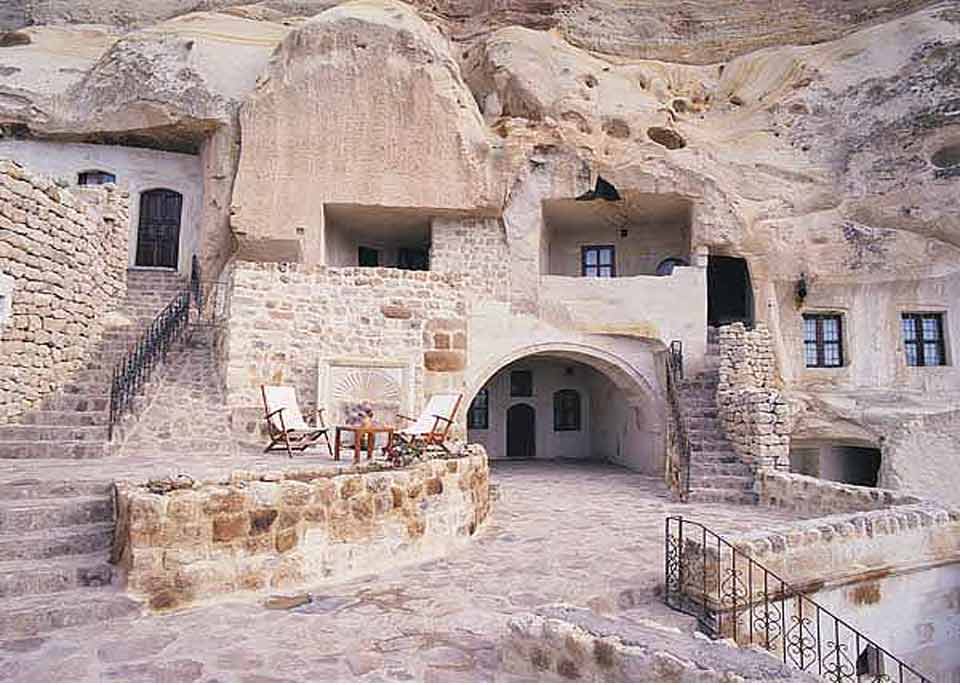
The ancient site of Susa – Khuzestan – 2015
The city of Shush, located in Khuzestan province, is one of the oldest known settlements in the world and was probably founded in 4000 BC.
The world heritage area of Susa includes Bostani hills where Ardeshir Palace is located on the river bank. Discovered historical buildings include administrative, residential and luxurious structures. The ancient hill of Susa consists of several layers of urban settlements in successive periods, from the end of the 5th millennium BC to the 13th century AD.
According to the documents, the ancient city of Susa is one of the most important and magnificent ancient cities of Iran and the world, and archaeological activities continue there. This ancient city, together with the tomb of Daniyal Nabi, and under the name of the tomb of Daniyal Nabi, the city of Shush and the nearby hills, was registered as one of the national monuments of Iran on the date of 24 Shahrivar 1310 with registration number 51. The historical site of Susa was registered in the world register in July 2015 in the city of Bonn, Germany. This historical site includes Shapur Palace, Apadana Palace, Eastern Gate, Hadish Palace, 15th City, Achaemenid Village, Grand Mosque of Shush and a collection of buildings from the Islamic period, Acropolis Hills and French Castle.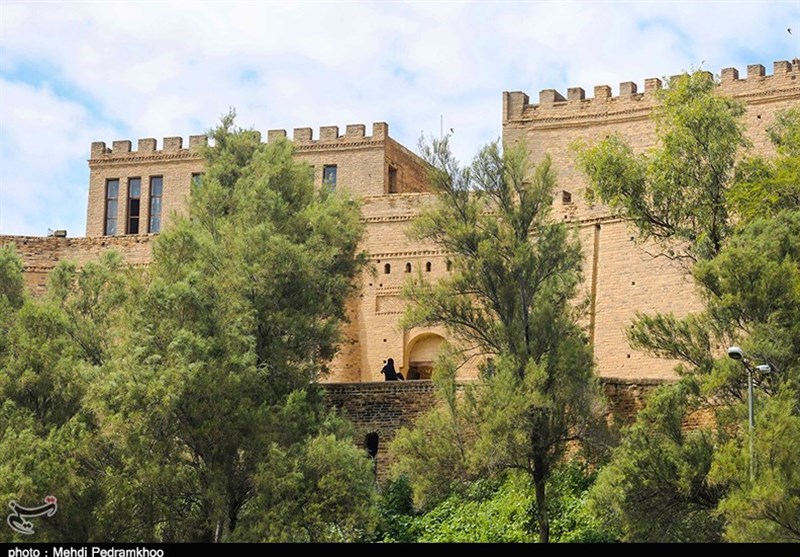
Iranian aqueduct – shared by several provinces – 2016
In this context, so far there are heritages such as Chaghazanbil, Takht Jamshid, Naqsh Jahan Square, Takht Suleiman, Bam and its cultural atmosphere, Pasargad, Soltanieh Dome, Biston inscription, Azarbaijan churches complex, Shushtar water structures, Tabriz market historical complex, Sheikh Safiuddin Ardabil tomb, Irani Garden, Jame Mosque of Isfahan, Qaboos Dome Tower, Golestan Palace, Sokhteh City, Maimand and Shush had reached the UNESCO World Register.
Now, eleven Iranian aqueducts have reached the world register at the 40th UNESCO World Heritage Summit, in this regard, Ali Asghar Samsar Yazdi – researcher and senior consultant of the International Center for Aqueducts and Historical Water Structures, who played a major role in the preparation and compilation of the file for the world registration of Iranian aqueducts , explained the unique features of 11 selected aqueducts in the list of UNESCO works.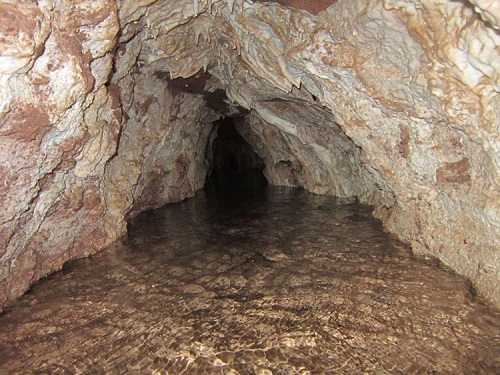
Dasht Lot – shared by several provinces – 2016
The structure of the aqueduct consists of the mother of the well, the wells , the conduit and the hose or the manifestation of the aqueduct in a gentle slope. The most important factor that determines the length of the aqueduct is the slope of the land. The lower the slope of the land, the longer the length of the aqueduct, and the higher the slope, the shorter the length of the aqueduct. The most important canals of Iran are located in Razavi Khorasan, South Khorasan, Yazd, Kerman, Central and Isfahan provinces
The existence of the longest aqueduct in the Yazd region and the deepest one , the aqueduct of the town of Gonabad, with a 350-meter deep well, proves that Iran is one of the first origins of What is most prominent in the prominent features The continuity of the innovation and performance of the aqueduct is from the Achaemenid period to the contemporary period. In addition to the ancient technology In a historical connection, it is also seen in the construction of other canals in the region . The way of connecting the canals of the village and the town in the framework of a special cultural landscape have created the model of the canals of the Khorasan region .
The creative knowledge and methods used in the creation of the Zarch aqueduct as the longest aqueduct or the Hasan Abad Mushair aqueduct as an example of the wateriest aqueducts in Yazd; It is also seen in the construction of canals in Isfahan . The use of techniques such as the use of underground dams or the construction of aqueducts at different levels, such as the Mun aqueduct, which is created in two floors, makes it a model of two-story aqueducts . The most comprehensive examples of Isfahan canals as the best representatives of the central region of the Iranian plateau, which have underground dam technology have been selected .
Wazwan and Mazdabad aqueducts show the development of aqueduct design and technology . Ebrahim Abad water aqueduct is another representative of the central plateau region of Iran, which is part of the Iranian aqueduct collection. Bam aqueducts are a creative masterpiece in using the water resources of the faults to reach the underground water .
All these features have been prominent in the historical process of this great architecture as global values . Akbar Abad and Qasim Abad canals , two examples of the young canals of Bam, which were selected from among the other old canals of Bam , are considered a small part of the cultural landscape of the world heritage of Bam and are still alive after the Bam earthquake, which shows that It is from the dynamism of the art and culture of aqueduct construction in Iran. Due to its outstanding global values, the canal complex has been registered in the UNESCO World Heritage List in 2016 AD, with criteria ( iii ) and ( iv ) of the 40th meeting of Istanbul under number 1506.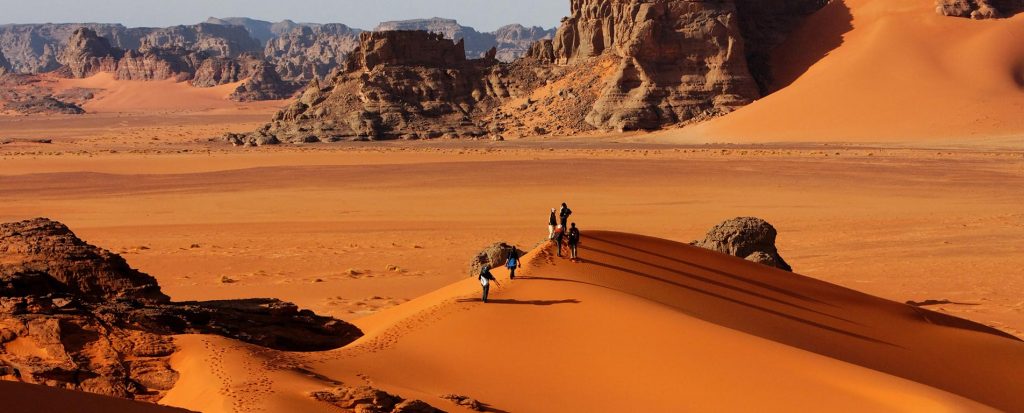
Historical city of Yazd – Yazd – 2017
The second historical city of the world has many “top” tourist, historical and cultural heritage attractions, each of which can be a unique attraction for tourists and lovers of the cultural heritage and history of Iran and the world. This city is known as the city of winds. To Dar al-Abadah, the city of bicycles, the city of Shirini, the city of qanat and qanut and contentment and the city of fire and sunshine.
Historians believe that Yazd dates back to before Islam. Some people say that perhaps the historical city of Yazd should be searched for in another place other than its current location. However, many historical monuments discovered in Yazd date back to the 5th century. At the same time, the discovery of other buildings belonging to the 2nd and 3rd centuries of Hijri increases doubts in estimating the age of Yazd city. In any case, the history of human habitation in this region has gone beyond the third millennium BC, so that during the Pishdadian era, the tribes migrating from Balkh to Pars called this land Yazdan, and from that time Yazd became a place of worship. . Yazd is known as the safest city because war and natural disasters have not been able to harm it. This is why historians have mentioned it as the safest city in Iran.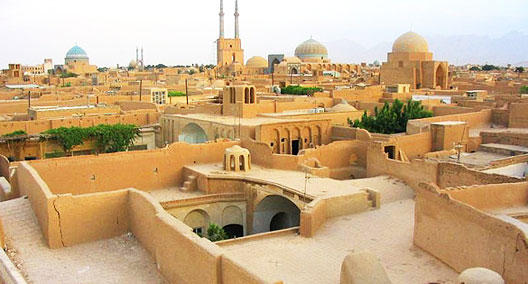
Sasanian ancient landscape – Fars – 2018
The Sasanian archeological landscape of Fars region consists of eight ancient sites located in three ancient regions, Firouzabad, Bishapur, Sarostan in the southwest of Fars province. These works are one of the four works that were registered in the meeting of the UNESCO World Heritage Committee on June 30, 2018, so that the number of Iranian works registered among the UNESCO World Heritage will reach the number of 23 and the works of Fars province will reach the number of 5.
In December 2015, Iran sent the file of Sasanian works of Fars Province to UNESCO in a 1000-page document, and UNESCO, in its 42nd annual meeting held in Bahrain in June 2018, included these works along with three other works in the UNESCO World Heritage List. Contract. The other three works include hidden Christian sites in the Nagasaki area, Sansa, Buddhist mountain monasteries in Korea, and the Victorian Gothic and Art Deco complex of Bombay.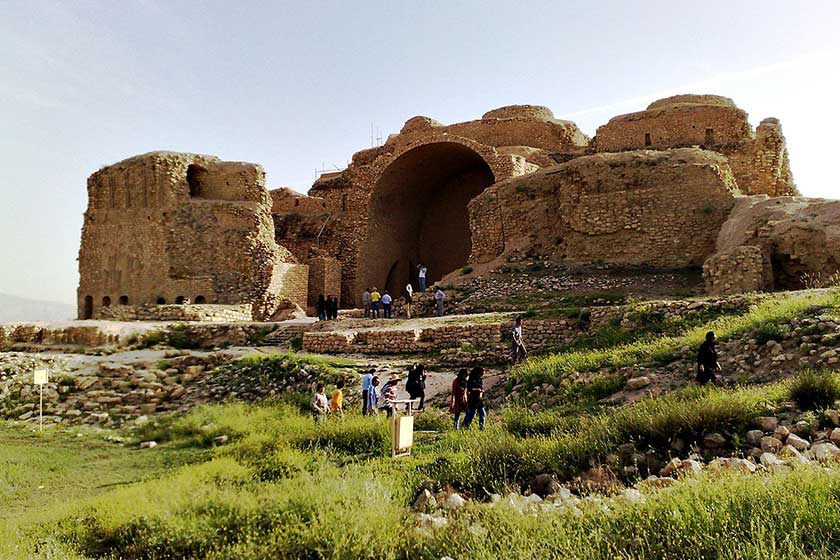
These structures, palaces, and cities date back to the early and late Sassanid Empire, which spread across the region from 224 to 658 AD. These sites include the city of Gore, the capital city built by the founder of the dynasty, Ardeshir Babakan, Bishapur, the city and its successor, Shapur I, and Sarvostan, the palace of Bahram V, the 15th Sassanid king. The archeological landscape shows the optimal use of the natural topography of the region and a witness to the influence of the Achaemenid and Parthian cultural traditions and Roman art, which had a significant impact on the architecture and artistic styles of the Islamic era. Other works include the statue of Shapur I (Shapur Cave), Ardeshir Babakan Palace, Dokhtar Castle, Ardeshir Babakan petroglyphs and the relief of Ardeshir’s victory over Erdovan.
Hyrkanian forests – shared by several provinces – 2019
The Hyrkan forests, which were registered in the UNESCO world list this July, are the remnants of the forests of the third geological era (Jurassic, or the age of dinosaurs), which are very important in terms of stability and age. About 2 million hectares of these forests are located in Iran and in the 5 provinces of Gilan, Gorgan, Mazandaran, North Khorasan and Semnan, and the global registration of this valuable work in the world heritage list is a suitable measure to preserve Iran’s ecosystem and natural tourism.
Hyrkani Forests is a 850 km long green strip that stretches from the Gorgan Plain to a part of Azerbaijan and its name is taken from the old name of Gorgan, which was called “Hirkan” in the past. A forest area on the southern shore of the Caspian Sea and north of the Alborz mountain range, whose biodiversity, native, rare and unique species of plants and animals, and its amazing natural beauty dazzle the eyes of every viewer.
Hyrcanian forests are known as living fossils or natural museums. Because many of the plant species found in these forests are found today as fossils in Europe. There are many plant species in Hyrcanian temperate and mixed forests due to soil fertility, temperature changes and numerous rainfalls. More than 80 species of broad-leaved trees, 4 species of conifers and 50 species of shrubs have been identified in it so far.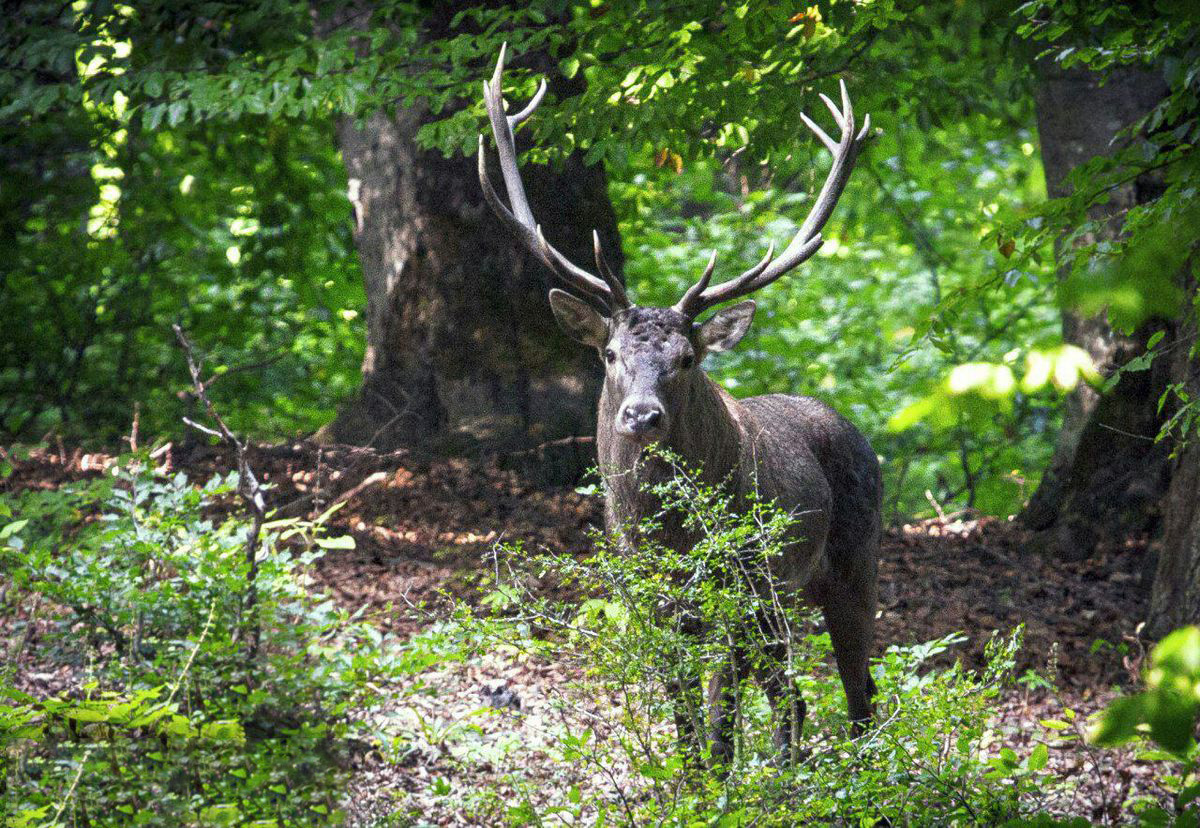
Iran national railway – shared by several provinces – 2021
In the third session of the 44th meeting of the UNESCO World Heritage Committee, with the approval of the members of the committee, Iran’s nationwide railway with a length of about 1400 km was registered as the 25th tangible cultural heritage and the first industrial heritage of Iran in the UNESCO world list.
The history of the construction and successful operation of the first railway in Iran dates back to the Qajar period in 1227 solar year (1848 AD) from Rasht to Pirbazar port and Anzali port, and the remains of this track are still on the way from Rasht to Pirbazar and a steam locomotive in the area of the General Directorate of Ports in Gilan province. There is. 12 km of this railway was still used until the middle of Reza Shah’s period.
In 1261 A.D. (1882 AD), a tram line between Tehran and Shah Abdulazim was extended to a length of 8700 meters. The width of this railway was one meter and it was implemented by the French Monsieur Boutal and then handed over to a Belgian.
In 1265 A.D. (1886), the railway line was built from Mahmood Abad (southern shores of the Caspian Sea) to Amol. Although it was planned to continue to Tehran, it failed due to the sabotage of Belgian contractors, and its lines were dismantled and used to build a telegraph .
In 1292, the Russian Borrowing Bank won the concession to build the Jolfa-Tabriz and Sufian-Sharafkhane railways . The following year, the First World War began, and the Borrowing Bank handed over this privilege to the Tsarist Russian government, which built the 149-kilometer Tabriz-Jolfa railway for its army and put it into operation in 1295, but after the end of the war and the withdrawal of the Russian army, On the 10th of Hut (March) 1299, the Soviet government handed over the Jolfa to Tabriz and Sufian to Sharafkhaneh railways to the definitive ownership of the Iranian government, free of charge, along with the completion of its buildings, vehicles, and other belongings.
The cultural landscape of Oramanat – Kurdistan and Kermanshah – 2021
Horaman is located in the provinces of Kermanshah and Kurdistan, with about 409,000 hectares of land and sanctuary, of which 106,000 hectares belong to the arena and 303,000 hectares are part of the sanctuary. This file was sent to UNESCO last year.
Horaman or Oraman is the name of a historical region with a stepped texture and very special customs, which includes parts of Sarovabad, Sanandaj and Kamiyaran cities in Kurdistan province and Ravansar, Paveh, Javanroud and Salas Babajani cities in Kermanshah province. The main part of the Horaman/Uramanat cultural landscape includes the valleys of Javah Rood, Oraman Takht and Lehun.
About 700 villages are located in Oramanat/Huraman region. In 2019, a field evaluation of the cultural landscape of Oramanate/Horaman was carried out by a global Icomos evaluator.
Horaman/Uramanat region is a cultural region located in the west of the country between the two provinces of Kurdistan and Kermanshah, which has towering mountains and raging rivers. The presence of these natural factors has shaped the valleys where the residents of Horaman/Uramanat have lived in interaction with nature for thousands of years and this interaction can be seen in the terraced gardens, the terraced architecture of Hvarneshi life (temporary huts), authentic celebrations and rituals, unique handicrafts of the region and … witnessed.
Horaman region has a long history with an ancient cultural background, customs and special cultural symbols, each of these symbols illuminates the corners of the rich and fruitful culture of this region. The history of settlement in this area goes back to the pre-history of the discovery of Horaman deeds of the existence of the ruler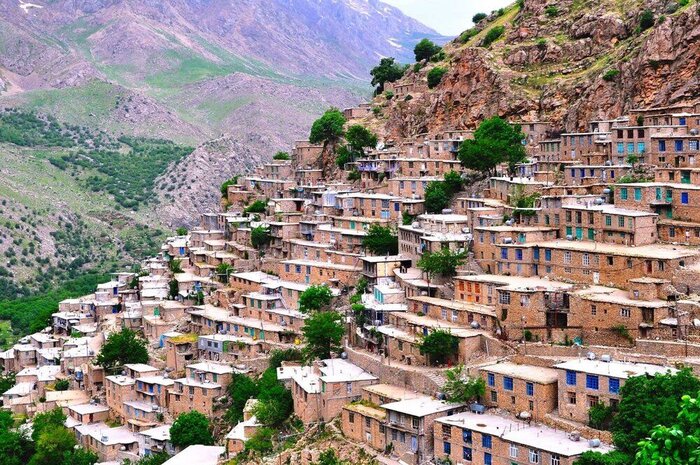 It has confirmed the Assyrians, Medes, Achaemenians and Greeks.
It has confirmed the Assyrians, Medes, Achaemenians and Greeks.


